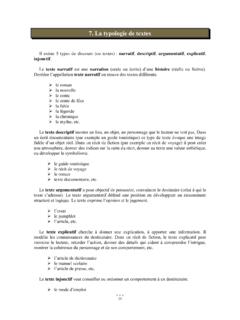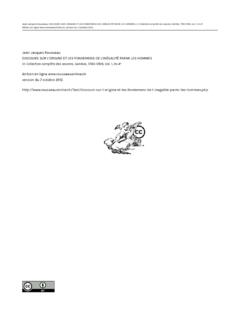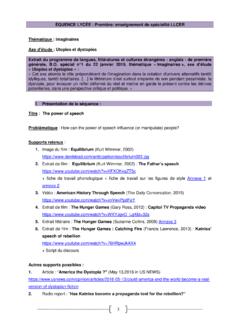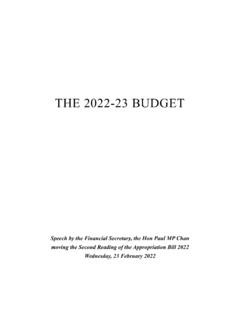Transcription of United Nations Strategy and Plan of Action on Hate Speech
1 United Nations Strategy and Plan of Action on Hate SpeechDetailed Guidance on Implementation for United Nations Field PresencesSEPTEMBER 2020 TABLE OF CONTENTSFOREWORD BY THE SECRETARY-GENERAL ..3 SUMMARY ..5I. INTRODUCTION: A COMMON APPROACH ..7II. UNDERSTANDING HATE What is hate Speech under the Strategy ? ..10B. What types of Speech are covered by the Strategy ? ..12C. How should the severity of hate Speech be assessed? ..17D. How is the Strategy relevant to United Nations field presences? ..19 III. IMPLEMENTATION OF THE Strategy S THIRTEEN COMMITMENTS ..23I V. Action POINTS AND SPECIFIC RECOMMENDATIONS FOR IMPLEMENTING THE THIRTEEN COMMITMENTS OF THE Strategy ..25 COMMITMENT 1: Monitoring and analysing hate Speech .
2 25 COMMITMENT 2: Addressing root causes, drivers and actors of hate Speech ..28 COMMITMENT 3: Engaging and supporting the victims of hate Speech ..30 COMMITMENT 4: Convening relevant actors ..32 COMMITMENT 5: Engaging with new and traditional media ..33 COMMITMENT 6: Using technology ..38 COMMITMENT 7: Using education as a tool for addressing and countering hate Speech ..40 COMMITMENT 8: Fostering peaceful, inclusive and just societies to address the root causes and drivers of hate Speech ..42 COMMITMENT 9: Engaging in advocacy ..44 COMMITMENT 10: Developing guidance for external communications ..47 COMMITMENT 11: Leveraging partnerships ..48 COMMITMENT 12: Building the skills of United Nations staff ..49 COMMITMENT 13: Supporting Member States.
3 50 KEY RESOURCES ON HATE Speech ..513 United Nations STR ATEGY AND PL AN OF Action ON HATE Speech : DETAILED GUIDANCE | SEPTEMBER 2020 Foreword by the Secretary-GeneralUNITED Nations Strategy AND PLAN OF Action ON HATE Speech : DETAILED GUIDANCE ON IMPLEMENTATION FOR United Nations FIELD PRESENCES1 Developed by the Office on Genocide Prevention and the Responsibility to Protect, in consultations with the United Nations Working Group and several United Nations field presencesFighting hate, discrimination, racism and inequality is at the core of United Nations principles and the Organization s work. It is enshrined in our founding Charter, in the inter-national human rights framework and in our collective efforts to achieve the Sustainable Development Goals.
4 Hate Speech , including online, has become one of the most frequent methods for spreading divisive and discrim-inatory messages and ideologies. This is why I launched a United Nations Strategy and Plan of Action to counter this poison. The Strategy embodies a commitment by the United Nations to step up coordinated Action to tackle hate Speech both globally and at the national level. It responds to the worrying growth of xenophobia, racism and intolerance, including anti-Semitism and anti-Muslim hatred, around the world. Hate Speech undermines social cohesion, erodes shared values and can lay the foundation for violence, undermin-ing peace, stability, sustainable development and the fulfillment of human rights for all.
5 Implementing the Strategy requires concerted system-wide efforts. My Special Adviser on the Prevention of Genocide is coordinating these efforts in close collaboration with the United Nations Working Group on Hate Speech , com-prised of 16 United Nations entities. United Nations Country Teams and our peace opera-tions and political missions are also engaged, since we know that often the most effective Action to address and counter hate Speech happens at the national and grassroots levels. This Guidance1 provides detailed information on how to implement the 13 commitments set out in the Strategy and options for Action that United Nations staff can take in field con-texts, guided by the broad vision of prevention, and building on good practices from within the United Nations system as well as from Member States, civil society and other stake-holders.
6 The Guidance is a living document that will be reviewed and updated as needed. I encourage all Resident Coordinators and heads of United Nations missions to use this guidance to develop country-level Action plans to tackle 4 United Nations STR ATEGY AND PL AN OF Action ON HATE Speech : DETAILED GUIDANCE | SEPTEMBER 2020hate Speech , drawing on existing plans and programmes, most importantly the Sustainable Development Cooperation Frameworks. I also hope this Guidance will inspire United Nations senior leaders in the field to strengthen their collaborative work on this crucial challenge. We need a collective effort as each entity has something to contribute to addressing and countering hate Speech and no single entity can address and counter hate Speech on its own.
7 While States have the primary responsibility, the United Nations is well-placed to support such efforts through technical assistance and capacity building and by ensuring that national measures are in line with international human rights norms and standards. The United Nations also has an important role in convening and partnering with others, including civil society, media and the private sector, in particular tech and social media companies. I trust that this Guidance will facilitate implementation of the Strategy on the ground and bring us closer to upholding the values of the Charter of the United Nations that reaffirms the dignity and worth of every person, a commitment to live in tolerance and respect and the shared promise of the 2030 Agenda for Sustainable Development to leave no one nio Guterres United Nations Secretary-General 5 United Nations STR ATEGY AND PL AN OF Action ON HATE Speech : DETAILED GUIDANCE | SEPTEMBER 2020 Summary This Guidance is a resource tool for United Nations field presences on implementing the United Nations Strategy and Plan of Action on Hate Speech .
8 The Strategy covers three categories or levels of unlawful and lawful AT THE TOP LEVEL, direct and public incitement to genocide and advocacy of national, racial or religious hatred that constitutes incitement to discrimination, hostility or violence are prohibited under international AT THE INTERMEDIATE LEVEL, certain forms of hate Speech may be prohibited, but only if restrictions are provided by law, pursue a legitimate aim ( respect of the rights of others, or the protection of public order) and are necessary and AT THE BOTTOM LEVEL, legal restrictions should not be imposed on the dissemination of lawful expressions that are, for example, offensive, shocking or disturbing. The primary duty bearers under international human rights law are State actors, including Governments, legislatures, State authori-ties, and courts.
9 States remain at the centre of the implementation of the United Nations should support State actors in discharging their responsibilities under inter-national human rights law and towards imple-menting the Strategy . In doing so, the United Nations should place victims at the centre of its approach. Civil society organizations are an indispensable partner to the United Nations field presences responses to hate Speech should be calibrated according to the level of severity, assessed on the basis of (a) the social and political context; (b) the status of the speaker; (c) the intention of the speaker; (d) the content and form of the Speech ; (e) the extent of its dissemination; and (f) the likelihood of harm, including imminence (the six-part test or the Rabat threshold test ).
10 In implementing the Strategy , United Nations field presences should note that: >Only incitement to discrimination, hos-tility or violence that meets all six criteria should be criminalized; >Less severe forms of incitement or hate Speech ( which do not meet all six criteria) should attract civil or administrative law-based restrictions, or public policy responses; >Public condemnation of hate Speech , accountability for attacks on those exercis-ing their right to freedom of expression, and the expediting of public policy measures on 6 United Nations STR ATEGY AND PL AN OF Action ON HATE Speech : DETAILED GUIDANCE | SEPTEMBER 2020the promotion of diversity may be especially important in the immediate aftermath of an incident of hate Speech or incitement, and when tensions are escalating in a United Nations field presences have a common responsibility to implement the Nations resident coordinators, coun-try teams (UNCT), peacekeeping opera-tions and special political missions have responsibilities to protect and promote 2 The United Nations Working Group on Hate Speech at Headquarters includes the following entities.














